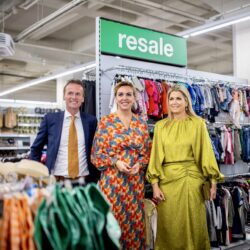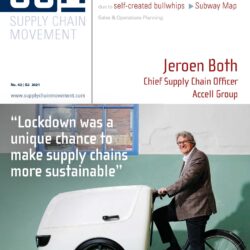Circular clothing industry still has a long way to go

The Netherlands is aiming for a fully circular economy by 2050. This also applies to the clothing industry, but the current (ultra) fast-fashion business model is diametrically opposed to this. Partly because of the highly competitive nature of the market, manufacturers are not going to start producing fewer items and more sustainably of their own accord. Circularity in the clothing market needs to be based on a profitable revenue model – and this is still often lacking. Nevertheless, the transition to a circular economy offers opportunities for wholesalers, according to a new sector study by ING Research.
To make smarter and more economic use of raw materials, products and services, the Netherlands is aiming for a fully circular economy by 2050. In other words, an economy which wherever possible uses raw materials that are sustainable and renewable, reuses products and raw materials as much as possible, and minimizes waste. This can be achieved based on four circular revenue models: repair, resale, rental, and remodelling (processing discarded clothing into new products and/or materials).
Resale and repair are most common
Analysis of 20 sustainability reports by both Dutch and international clothing companies shows that, out of these four circular revenue models, resale and repair are currently the most common, albeit often still on a small scale. For example, Zeeman (pictured: Zeeman’s CEO Erik-Jan Mares with Queen Máxima and State Secretary Vivianne Heijnen) offers second-hand clothing in eight of its stores, one branch of Bever buys back used clothing from a select number of brands, and Livera offers repair services in a number of its stores. Remodel is the least developed circular revenue model among the clothing companies analysed.
One major obstacle is the fact that not all circular revenue models are equally suited to the different market segments in the clothing industry. A circular revenue model like repair is only attractive if the cost of repair is significantly lower than the value of the garment. Therefore, repairing cheap clothing often does not outweigh the purchase price of a new garment. The same applies to rental. Why rent something once for €10 when you can buy it and keep it for €20? Rental is therefore only attractive and profitable for the premium and luxury segment.
Few circular revenue models are profitable
In addition, circular revenue models such as resale and repair are still barely scalable, making it difficult to make them profitable. In the case of resale, consider the return logistics of used clothing for example. After it is collected, it has to be manually sorted, cleaned and then sold again, either online or in a bricks-and-mortar store. The same applies to offering a repair service. Spare fastenings such as buttons and zips need to be made available, and repair staff must be hired or sourced. As a result, there are not yet many truly profitable circular revenue models in the clothing industry.
New opportunities for wholesalers
‘The clothing industry still has a long way to go to achieve a fully circular economy. Above all, it means producing fewer items and more sustainably, something that manufacturers will not start doing of their own accord. For wholesalers, however, this circular transition offers new opportunities,’ observes Dirk Mulder, Sector Banker Retail & Trade at ING.
‘As an intermediary between manufacturers and retailers, wholesalers can accelerate sustainable innovations by making circular products and materials accessible to retailers and consumers. Moreover, they have the capacity to steer manufacturers towards the responsible use of resources and waste reduction. In addition, wholesalers can facilitate the redistribution of surplus stock and unwanted clothes, giving them a second life. In doing so, wholesalers can contribute to a clothing industry that no longer revolves around consumption, but around reuse and value preservation,’ comments Mulder.










